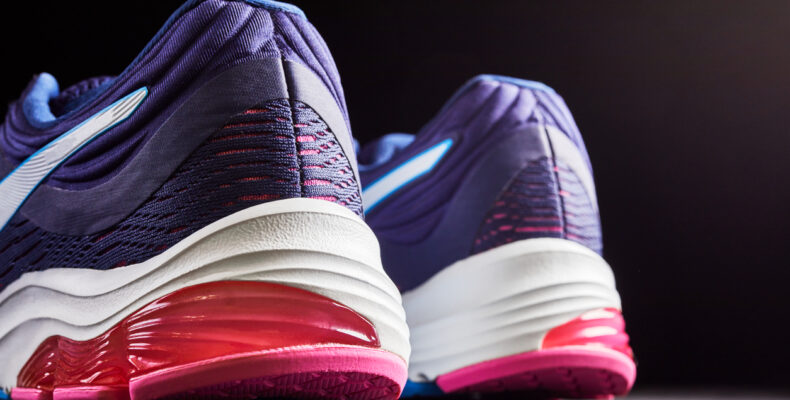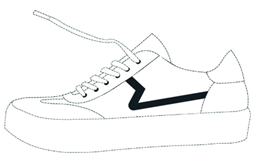
A Board of Appeal decision that makes fashion sense
Position trade mark registrations protect signs in the specific way that they appear on goods. A common example of such marks are geometric shapes applied to the side of footwear.
A recent EUIPO Board of Appeal (BoA) decision signals a sensible change of approach to the protection of these marks.
Background
Historically, it has proven difficult to register position trade marks in the EU and, by extension, the UK.
When considering the distinctiveness of these marks, examiners will consider:
- whether consumers will be able to identify the sign as being different from the normal appearance of the products themselves; and,
- whether the positioning of the mark on the goods is likely to be understood as having a trade mark context.
In the context of footwear in particular, there exists a fine balance between granting a monopoly over a distinctive position mark against keeping simply decorative designs free for all to use.
A step in the right direction
The BoA decision overturned the rejection of a position mark of Paredes Holding Center SL applied to footwear as illustrated below:

The examiner had originally refused the application in accordance with established case law. It was held that, while it is common practice to place decorative elements on footwear, consumers do not consider these to be indications of origin (unless educated to do so through intensive use).
In contrast, the BoA found the mark to be distinctive. The combination of geometric elements contained in the mark and its specific location rendered the mark striking and memorable.
In terms of the location, it was acknowledged that it is common to place designs on the side of footwear. Manufacturers will place the same design, in the same location, making it visible from a distance. Furthermore, consumers are accustomed to these types of brands in this location, and can be guided by them when purchasing footwear.
That said, banal signs will continue to be rejected even if placed on the side of a shoe. Similarly, a design should not be considered less distinctive by virtue of its appearance in that location. Indeed, the BoA acknowledges that the custom for placing trade marks on the side of shoes means that the complexity threshold required for the sign itself may be lower.
Comment
The approach taken by the BoA represents a new direction for position marks in relation to footwear. It may be regarded as a step forward in terms of the ability to secure a registration for this type of mark.
However, this may also represent as small step back. By accepting that the position of a trade mark on the side of a shoe is customary in the industry, and perceived as such by the consumer, this calls into question the value of a position mark over and above a more traditional trade mark registration.
On balance, this decision remains a welcome step in the right direction. It may prove easier to protect a more basic design as part of a position mark than by itself. In addition, a more distinctive design may benefit from an additional position mark registration to serve as a further deterrent to others and to assist in conflicts where the exact position is a decisive factor.
It is therefore advisable to reconsider the registration of position marks in the EU (and by extension the UK) in light of this latest decision.
Barker Brettell has a specialist team of Chartered Trade Mark Attorneys who can assist and advise you. To continue the conversation, please contact the author, or your usual Barker Brettell attorney.



